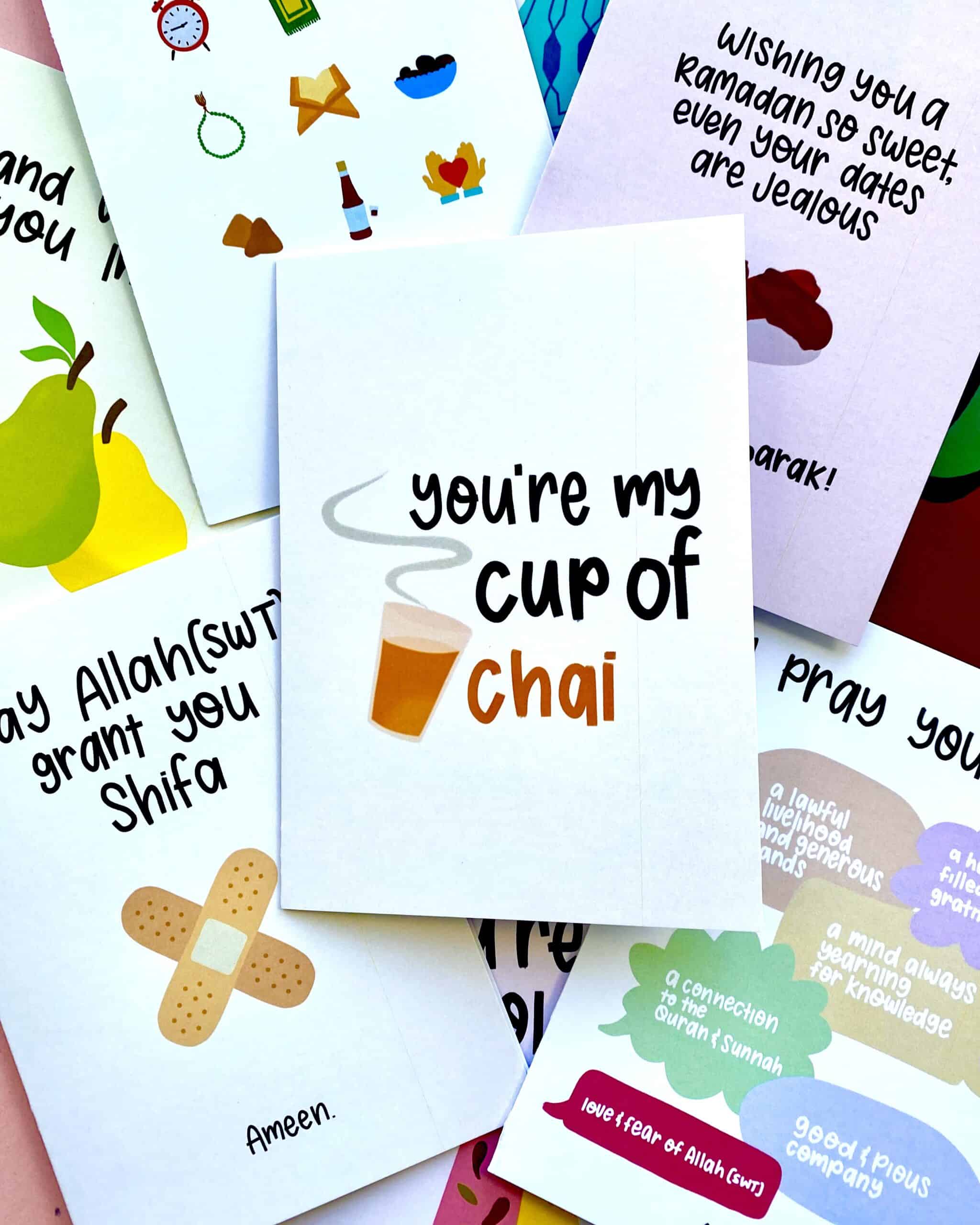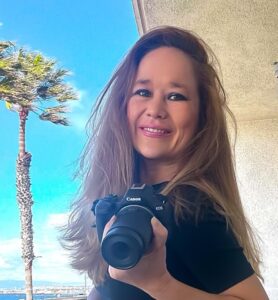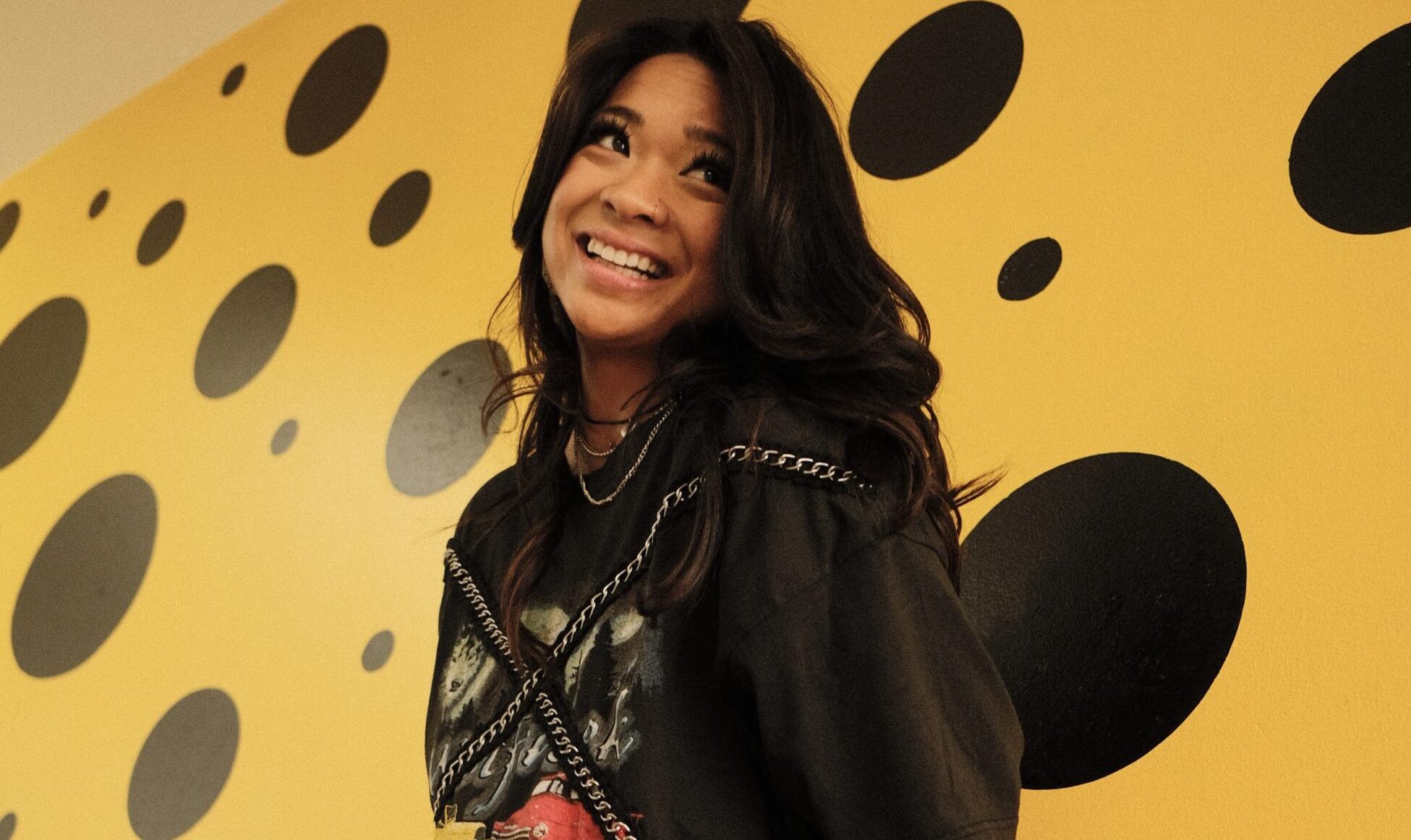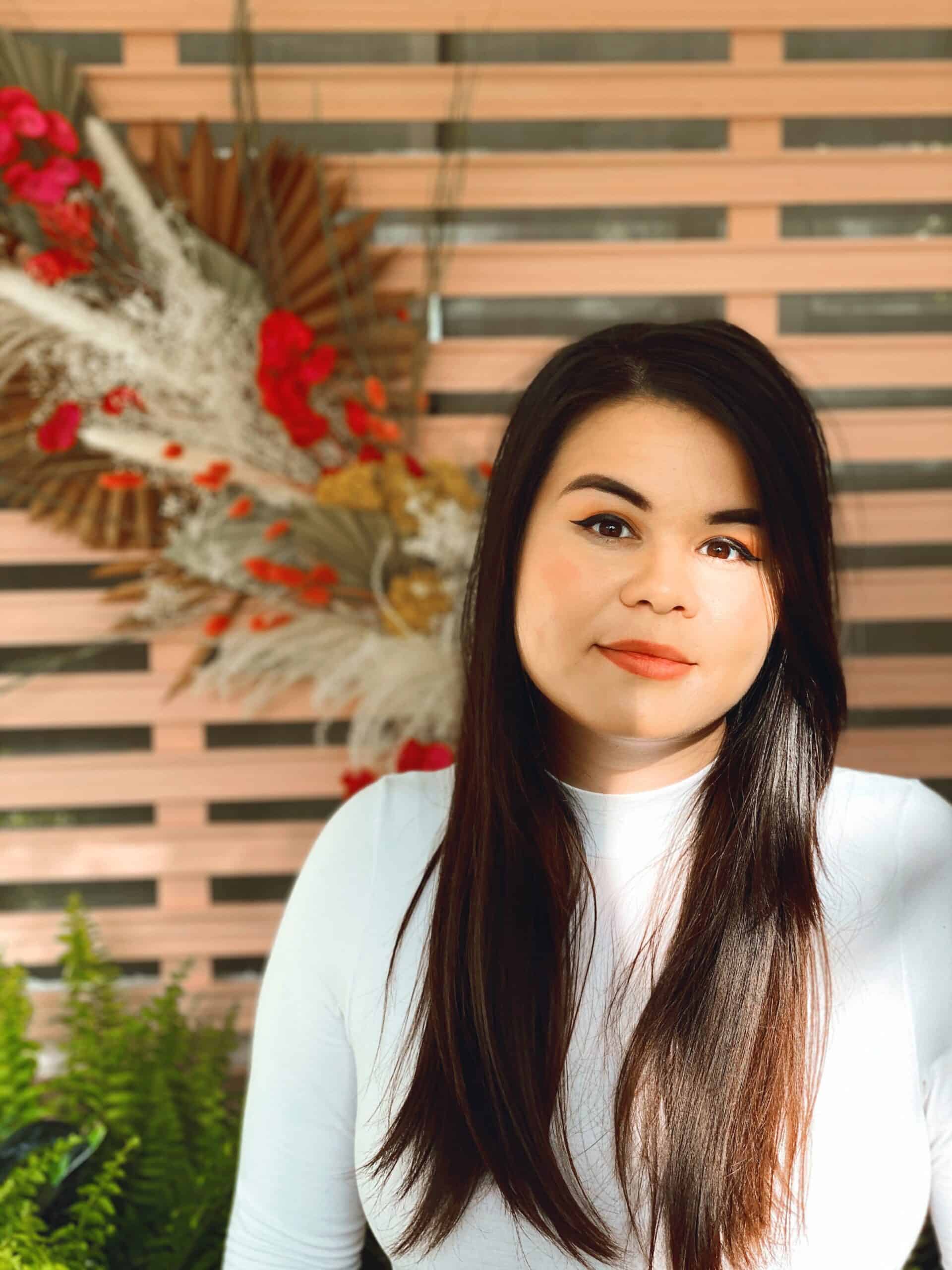Growing up, you mentioned not finding greeting cards that aligned with your intersectionality. Could you elaborate on how this influenced your decision to pursue digital art and launch your own store?
Gift giving has been a really big part of my personality for as long as I can remember. As a kid, I would pour over possibilities of gifts for my friends and my family and this is consistent with who I am now. I have a huge list that I compile throughout the year of gifts for all the people in my life because I enjoy the activity of giving gifts so much. And when you give a gift you always give a card. When I was a kid I would stand in the greeting card aisle for so long, looking at all the possibilities, trying to figure out which one would fit the situation that I am in and almost always I never found one that perfectly fit the person that I was giving the gift to. The jokes and phrases and comments on grocery store cards were always a little too ‘Western,’ and the ones at the Desi stores were as I called them when I was a kid, “old people humour.”
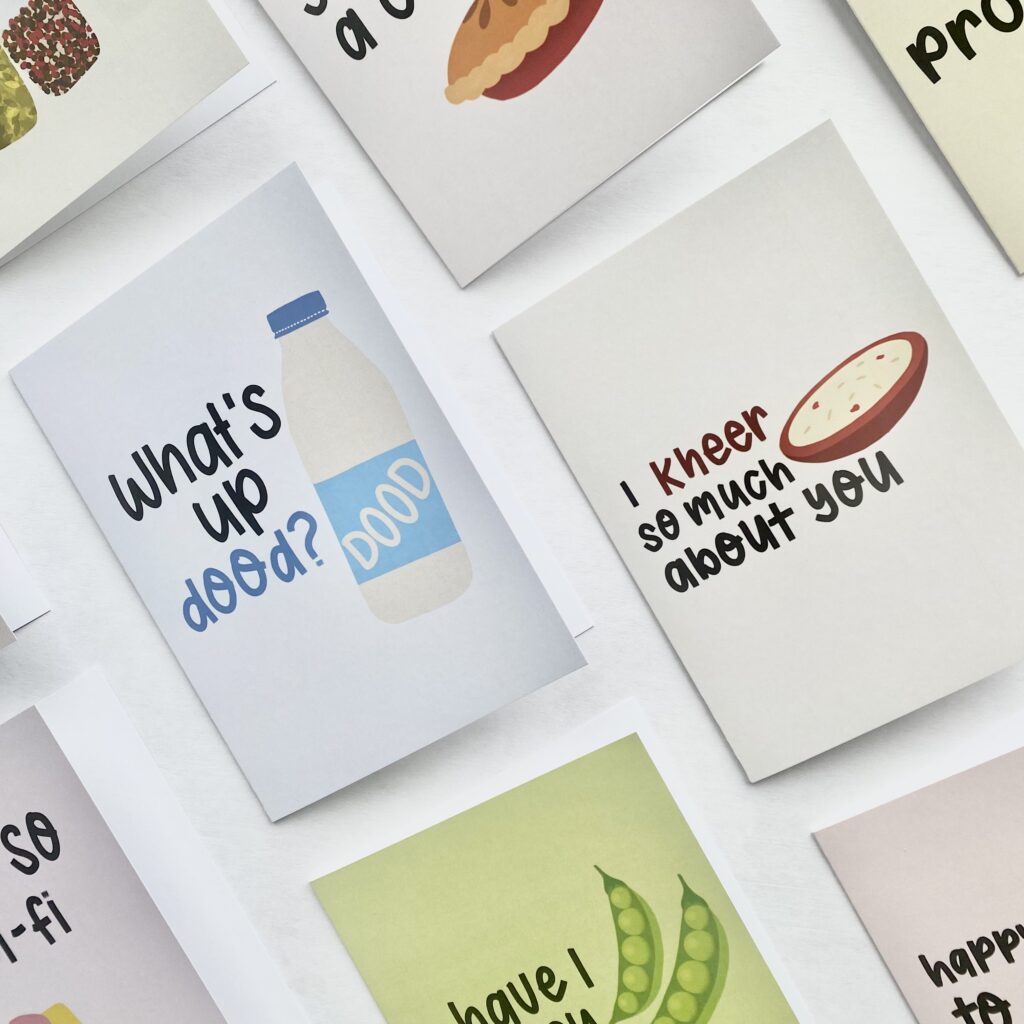
One of my very first cards that I designed was the “What’s up Dood?” greeting card. This card is an amalgamation of what I wanted Marhaba Prints to be. Something simple and colourful that is a mix of south Asian and Canadian culture. It's a joke that almost every first generation south Asian kid would have said at least once in their life. For me, it was my younger brother. He would say it over and over and over again when we were kids and it was something that made me laugh every single time. It's a joke that incorporates South Asian culture while having some sort of western twist to it that gave me a feeling I wanted to bundle up and put into a card. When I started to make cards that I knew I wanted to sell. This was one of the first cards I thought about because of this feeling that I had and the way it summarizes the south Asian kid experience.
What challenges have you faced in starting your own online store, and how have you overcome them?
Getting the word out there! Personally, the creative and admin side of the business is really easy. I'm able to design products all day if I have the time, and all the spreadsheets and financial aspects of running a small business really speaks to my organization-obsessed side. However, the marketing side is something that I really struggle with. Social media can sometimes feel like a lottery, and there is so much competition out there that it's very hard to get people to even get eyes on my products and my business, let alone believe in my vision, no matter how passionate I am about it. I've been trying to go through different avenues along with social media, like reaching out to other groups, word of mouth, and more because I think these avenues are really valuable and sometimes they're untapped with a lot of small businesses.
How do you balance preserving the beauty of Islamic art while incorporating modern western expression into your designs?
Islam is so interesting because Muslims are not from one specific region, but we come from all over the world. Based on where the artist comes from Islamic art will look very very different. One commonality in a lot of Islamic art pieces that I have found is vibrant colours, intricate repeating patterns, and symbols of mosques, moons, and minarets. I aim to incorporate all of these elements in at least some of the cards because it's so important for me to have that essence of Islam in all of my products since it is such a big part of my identity. But more importantly, I aim to ensure that the message of Islam that I have in my cards is never diluted. This is because while Islam is never one group of people from one region, it is one message and I would never want to stray from that message for the sake of aesthetics.
What do you hope people feel or experience when they receive one of your cards?
My hope is that when someone receives one of my cards, their first reaction is to laugh. I always aim to bring joy and laughter into the world and I hope my cards are another avenue for it. Afterwards, I hope that they feel a sense of familiarity or belonging, and the sense of being seen. While I hope that everyone enjoys my cards, no matter what group you belong to, my cards are designed for a very specific group of people in mind. I think I've identified with them for my entire life and have felt that I never quite belonged or that my likes and interests were not important enough to be on shelves. Hey, I hope that when this group of people receives one of my cards is that they feel seen and that they feel important and if even one person is able to feel this way, then I have accomplished my goal.
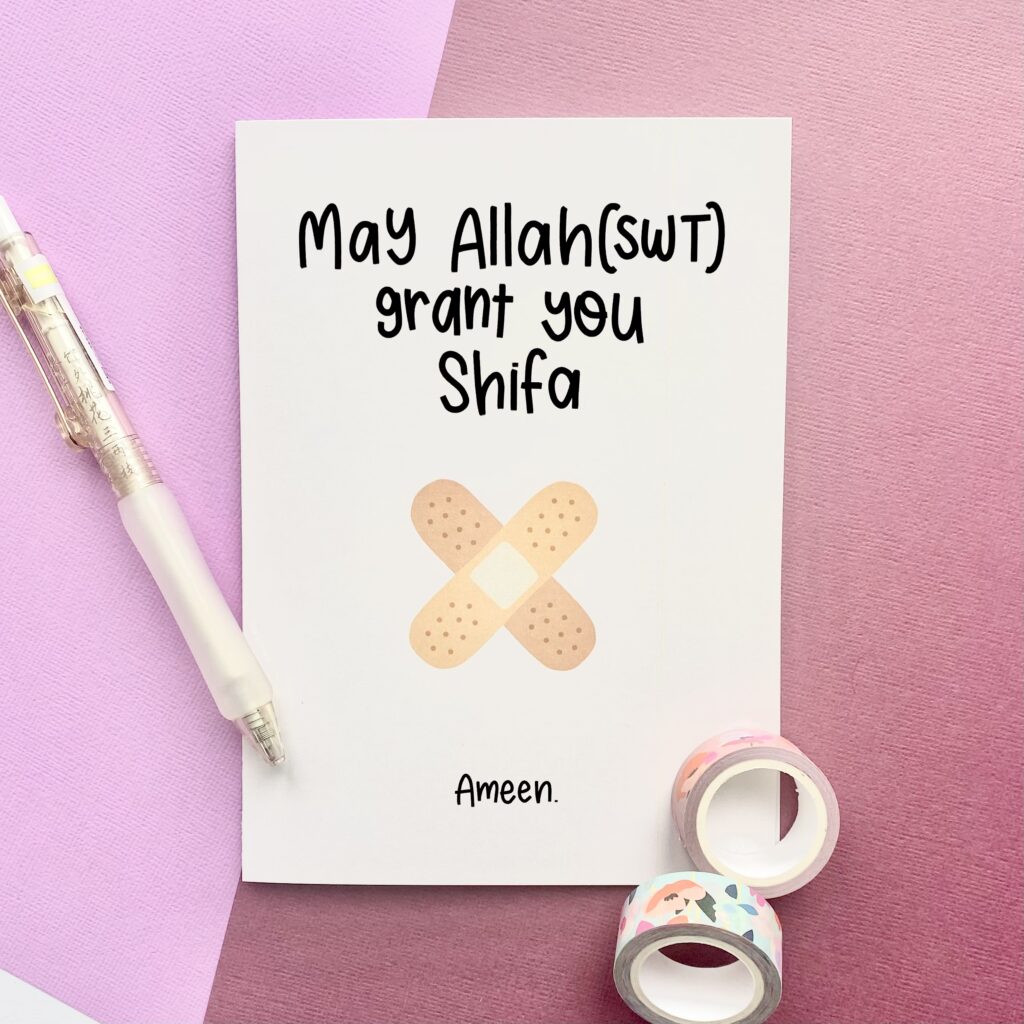
Have you faced any pushback or criticism for the themes or styles of your artwork, and if so, how do you respond to it?
One of the big criticisms that I've gotten is that the jokes and messages on my cards are not original. The messages and lines on my cards are not copies of someone else’s work, but rather they are jokes that have been told by people in my community for a very long time. I hope that by putting these jokes on my cards, I'll be able to reach that group of people and bring them a sense of familiarity. I am never ever trying to copy or plagiarize anyone. I am simply using the jokes and lines that I have used and my friends and family have used my entire childhood and putting them to paper. These jokes are not original, but that's the point, they are timeless and belong to an entire group of people and not just one person.
What advice would you give to other artists who are looking to create work that celebrates their identity and cultural heritage?
There is never one way to celebrate your identity in your culture because no one has had the same experience. What may be authentic to you may not be what somebody else resonates with. Make the art that you identify with. Make the art that would make the younger version of you laugh and smile and feel seen. That is the only way that you can celebrate your identity and culture authentically.
Looking ahead, what are your goals for Marhaba Prints in the coming years, and how do you envision your art impacting your community?
My goal is the same as how I started. I started because I could never find products that I liked, and I identified with them on shelves. And while we have made so many moves as a community and you can now see a lot more products that belong to our community on big store shelves, it is not enough. Our communities are vibrant and fun and filled with joy and we deserve an entire display all year round, and not just a single shelf for two weeks of the year. My main goal for Marhaba Prints is to expand and to get my products on shelves all year round, so that as my cousins and nieces and nephews and children grow up, they'll be able to easily find products that they identify with. Whether it is Marhaba Prints products, or other products that my brand was able to pave the way for. I hope that whatever the future may bring, I am able to celebrate my community out loud for everyone to see.
Website: www.marhabaprints.store
Instagram: https://www.instagram.com/marhabaprints/
Facebook: https://www.facebook.com/marhabaprints
Pinterest: https://www.pinterest.ca/shopmarhabaprints/
Tiktok: https://www.tiktok.com/@marhabaprints
